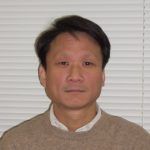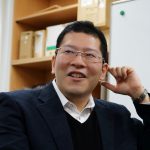In accordance with the admission policy, we offer three entrance examinations: the General Entrance Examination, February-Term and March-Term, and the Hiroshima University splendor (Hikari Kagayaki) Entrance Examination (Comprehensive Selection TypeⅡ). In addition, we offer a third-year transfer examination mainly for students who have graduated or will graduate from the institute of technology. Each entrance examination has its own characteristics in terms of the evaluation method and examation method and is open to a wide range of students.
General Entrance Examination, February-Term (Admission Capacity: 70 students)
Students are required to take the Common Test for University Admission (seven subjects in five subject areas) and the independent tests given by Hiroshima University in mathematics, science (physics, chemistry), and foreign languages. In the early scheduled entry exam, the ratio of points allocated to the independent tests is higher than that of the Common Test for University Admission, and the emphasis is placed on the independent tests, which are mainly written tests.
General Entrance Examination, March-Term (Admission Capacity: 8 students)
The entrance examination consists of the Common Test for University Admission (four subjects in six subject areas) and an interview. In the interview, the applicant will be asked questions about his or her interest in science and technology, ability to think logically, motivation to study, and aptitude. In the second round test, the ratio of points allocated to the Common Test for University Admission is extremely high, as the special emphasis is placed on basic academic skills based on the Common Test for University Admission.
Hiroshima University Splendor (Hikari Kagayaki) Entrance Examination (Comprehensive Selection TypeⅡ) (Admission Capacity: 2 students)
The first screening (application documents, essay, and interview) and the final screening (Common Test for University Admission) are used to determine the final successful applicants. In the essay and interview, applicants will be tested on their motivation for applying, aptitude, academic ability in mathematics and physics, writing ability, application ability, and ability to be creative and inventive.
In addition to the above-mentioned selection that requires the Common Test for University Admission (Comprehensive Selection Type II), we are also recruiting a few students for the International Baccalaureate (IB) Entrance Examination.
Entrance Examination for Engineering Special Course, February-Term (Admission Capacity: 45 students in the entire School of Engineering. About 10 students are assigned to Cluster 2 after the first semester of the first year)
Students are required to take the Common Test for University Admission (seven subjects in five subject areas) and the independent tests given by Hiroshima University in mathematics, science (two subjects from physics, chemistry, and biology), and are screened for acceptance or rejection based on their total score. At the end of the first semester of the first year, ten students are assigned to Cluster 2 according to preferences and grades in the first semester of the first year.
Selection for International Students, February- and March-Term
In February-Term, in addition to the results of Examination for Japanese University Admission for International Students and the English Language Proficiency tests designated by the university, the results of the individual achievement test (same as the general entrance examination, February-Term) and an interview will be used to evaluate the applicant’s academic performance. For March-Term, the results of the Examination for Japanese University Admission for International Students and the English Language Proficiency tests designated by the university, as well as an interview, will be used to evaluate the applicant’s academic performance.
The evaluation of the interview, transcript, and TOEIC®/TOEFL® score certificate will be combined to determine the applicant’s acceptance or rejection. In the interview, the applicant will be asked questions about his/her specialty (electromagnetism, electric circuits, or information and systems engineering) and mathematics to evaluate his/her basic academic skills and logical thinking ability.



